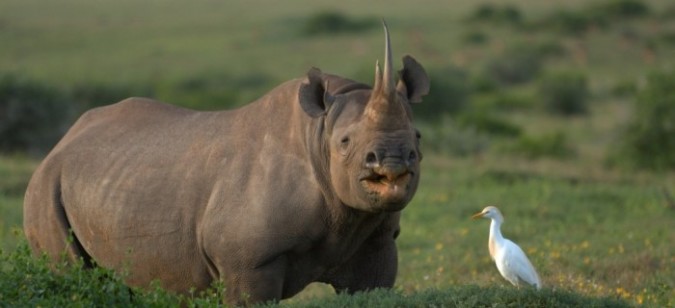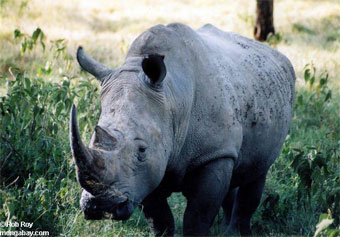

While fleeing from an intruder, a Black Rhino will release a series of snorts, curl its tail, and then calms down. Female Rhinos without young would join another family.īlack Rhinoceroses live a sedentary lifestyle-they stay in one general area, wherein they sleep around in the middle of the day while hunt and eat during mornings and evenings. Female Rhinoceros usually stay with their offspring as a family unit. This rhino species prefers to live solitarily, especially males, until it is time for mating. From less than 2,500 individuals back in 1995, today, their present population is around 5,450 individuals. Since then, local government in the continent exhausted conservation efforts to save them. Between 19, the population declined dramatically by 98%. The Black Rhinos’ population started declining in the 20th century because European hunters killed them.

They prefer habitats that have nearby water sources.

They take refuge in various habitats such as deserts, grassland savannahs, and forests. The distribution and habitat of Black Rhinocerosesīlack Rhinoceroses occur widely in Africa, from central to southern Africa, particularly in Angola, Kenya, Botswana, Malawi, Mozambique, Namibia, South Africa, Tanzania, Eswatini, Zambia, and Zimbabwe. Female rhinos usually have longer and thinner horns than males. Occasionally, Black Rhinos develop a small third posterior horn. The anterior horn measures 42 to 128 cm, while the posterior horn is 20 to 50 cm. It has two horns made of keratin: one anterior and one posterior. Male Black Rhinos are usually larger than females.
#Are black rhinoceros extinct skin
It has naked, hairless skin all over, except for the short, fringe hair on the ears.Īn adult Black Rhinoceros has a shoulder height from 1.4 to 1.8 m and a head and body length from 3 to 3.75 m. Its color is highly dependent on the soil conditions of its habitat. The Black Rhinoceros’ color ranges from yellow-brown to dark-brown and grey. bicornis The physical description of a Black Rhinoceros The Black Rhinoceros’ seven levels of scientific classification are as follows: South-western Black Rhinoceros – This subspecies lives in the desert and semi-desert in Namibia and Angola. South-central Black Rhinoceros – Known as the widely distributed subspecies, its population ranges from northeastern South Africa to Tanzania and southeastern Kenya. Now, they have a limited range in Kenya and Tanzania. Uganda Black Rhinoceros – This subspecies lives in Kenya, Uganda, and South Sudan.Įastern Black Rhinoceros – Back in the day, they were present in Ethiopia, Uganda, and South Sudan. North-eastern Black Rhinoceros – Now extinct, this was previously abundant in Sudan, Ethiopia, Somalia, and Eritrea.Ĭhobe Black Rhinoceros – Now nearly extinct, this species is present in Angola, Namibia, and Botswana. Southern Black Rhinoceros – Considered the largest among subspecies, this was once abundant in South Africa and southern Namibia. Aside from the Western Black Rhinoceros, Its subspecies are as follows: The Black Rhinoceros has seven or eight subspecies in total, with three of its subspecies, including the Western Black Rhinoceros have gone extinct in 2011. Overall, the Black Rhinoceros is classified as critically endangered by the International Union for Conservation of Nature (IUCN) Red List. This rhinoceros species was first described by Swedish botanist and father of modern taxonomy Carl Linnaeus back in 1758 in his “Systema naturae.” What differs the Black Rhino from the others are its hooked upper lip and ability to browse rather than graze. They are smaller compared to the other two African rhino species. Although commonly referred to as “black,” the color of this species ranges from brown to grey. The Black Rhinoceros, also known as Hooked-lipped Rhinoceros and Diceros bicornis, is a rhino species that is indigenous to eastern and southern Africa.


 0 kommentar(er)
0 kommentar(er)
